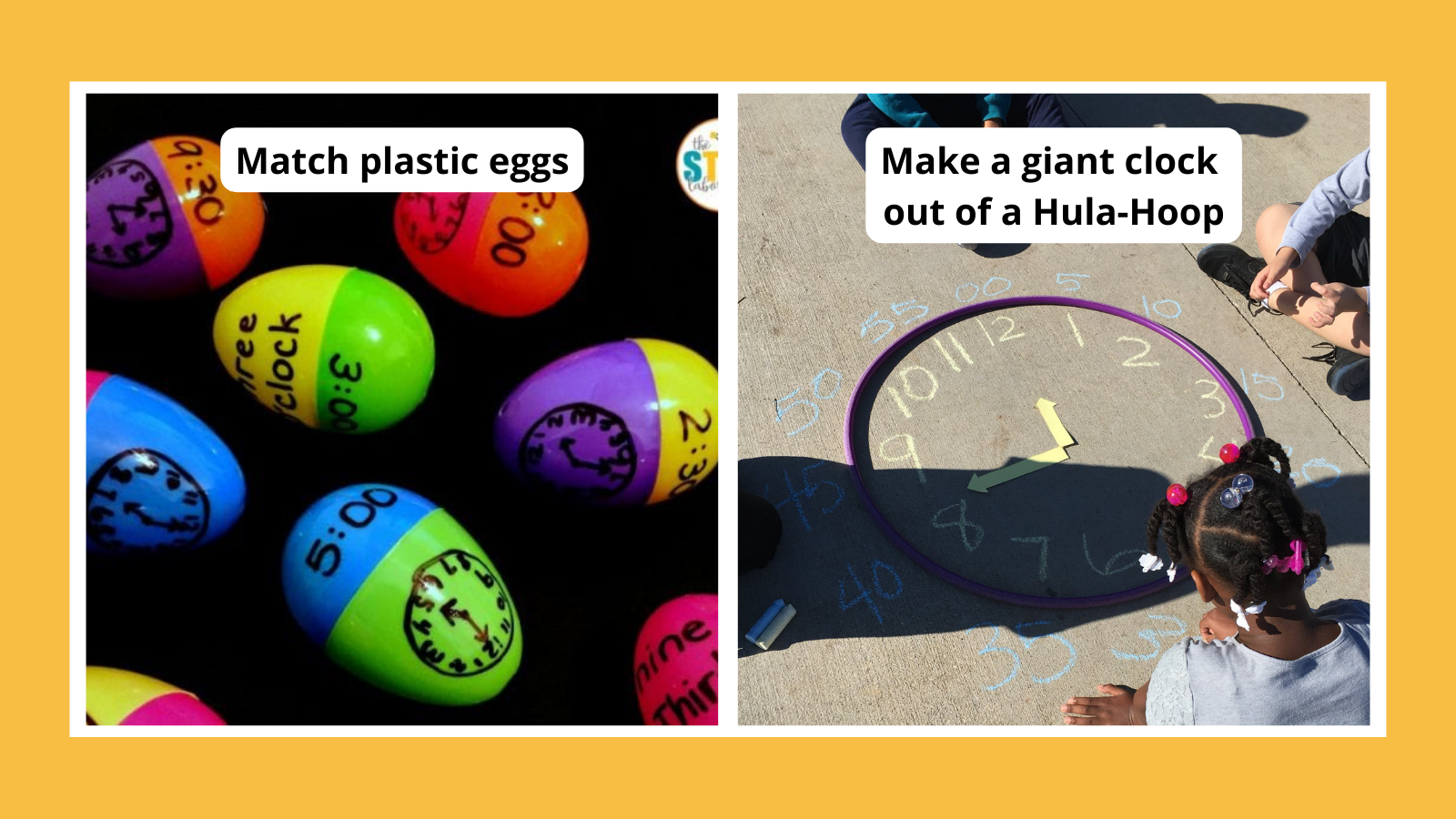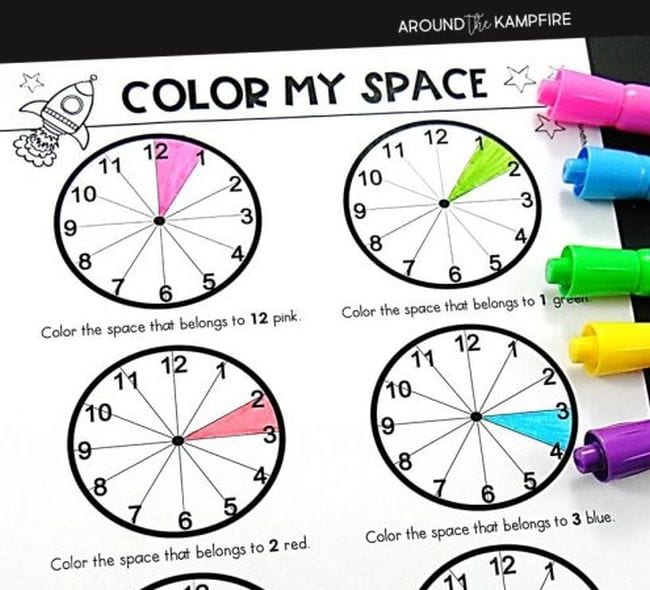 activities including matching digital and analog times on halves of plastic Easter eggs and making a huge clock with a Hula-Hoop and chalk." width="1600" height="900" />
activities including matching digital and analog times on halves of plastic Easter eggs and making a huge clock with a Hula-Hoop and chalk." width="1600" height="900" /> activities including matching digital and analog times on halves of plastic Easter eggs and making a huge clock with a Hula-Hoop and chalk." width="1600" height="900" />
activities including matching digital and analog times on halves of plastic Easter eggs and making a huge clock with a Hula-Hoop and chalk." width="1600" height="900" />
Learning to tell time is an important early math lesson since it’s a real-world skill that’s used every day by everyone. Learning about minutes and hours can become tedious fast, so you’ll want to have a lot of creative and hands-on ways to bring it to life for kids. Regardless of whether you get crafty with a paper watch or active with musical clocks, we think your students will be sure to have a good time learning all things time. There are, of course, old standbys on our list too like books and worksheets. Kids can even get in some extra practice with a free online game or two. Check out our personal favorite telling-time games to try with the kiddos in your life.

One of the trickier aspects of telling time is understanding how the number 1 also means 5 minutes, the number 2 means 10 minutes, and so on. This paper clock activity helps students make that connection. (Pro tip: Use paper plates to make this craft even easier.)

Another important concept kids need to grasp is how the spaces between the numbers work on an analog clock. These coloring games are a simple way to teach kids about telling time, but it helps drive the point home. Grab the free printable at the link.

Use these telling-time puzzle games to demonstrate different ways of showing the same time. We especially love this version.

First, print and cut out the free printable paper watches available at the link below. Draw hands on each clock face and record what time each student’s watch reads on a master record sheet. Have kids decorate their watch bands, then fasten them on their wrists and add the clock faces. Give each student a record sheet, then let them go around the room and ask each of their classmates, “What time is it?” They look at their classmate’s watch and record the time. Check their results against your master.